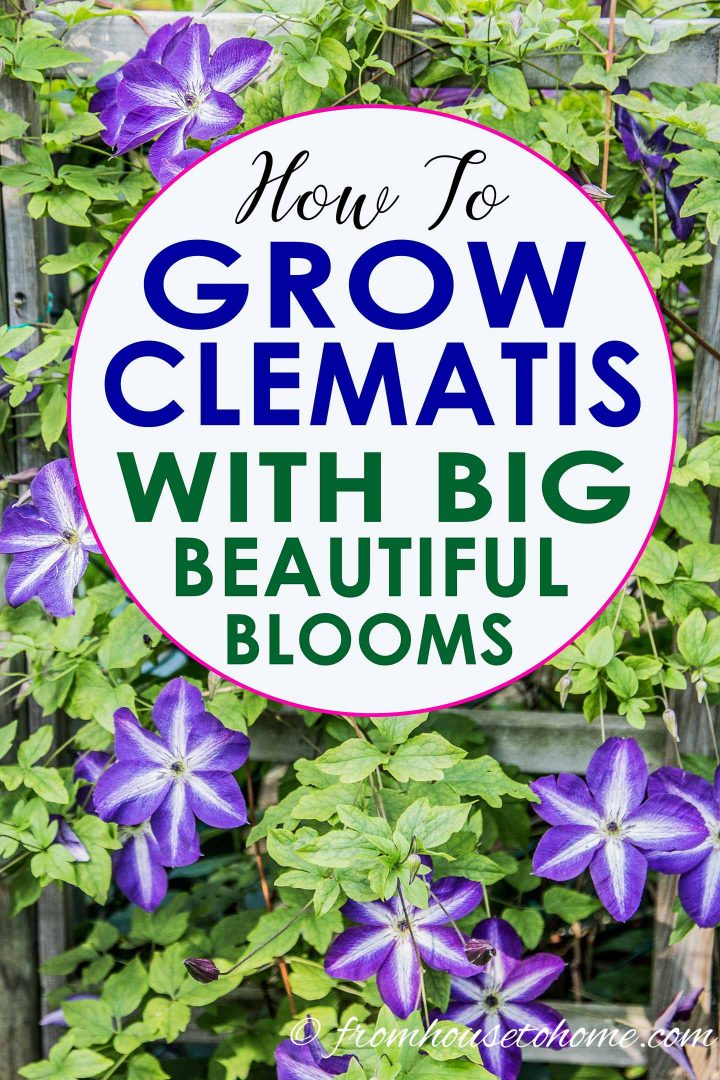Unlock Year-Round Blooms: The Ultimate Clematis Care Guide for Every Gardener
Whether you're a beginner or an expert gardener, Clematis vines are a perennial that belongs in everyone's garden. It's easy to grow, and if you plant a few different varieties you can have big, beautiful blooms all season long. Learn how with this Clematis care guide.
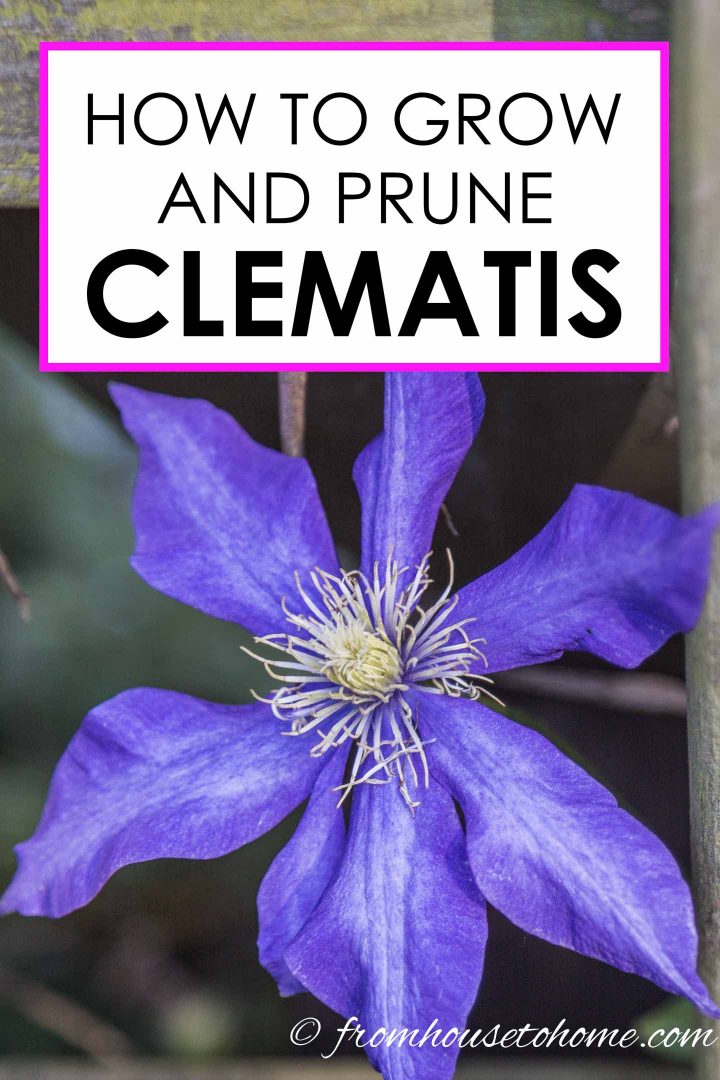
I have come to the realization that I am a little obsessed with Clematis.
I didn't actually know how obsessed until I started taking pictures for this article.
There are 25 different varieties of these perennial vines growing in my garden at the moment! And I'm not ruling out getting some more 🙂
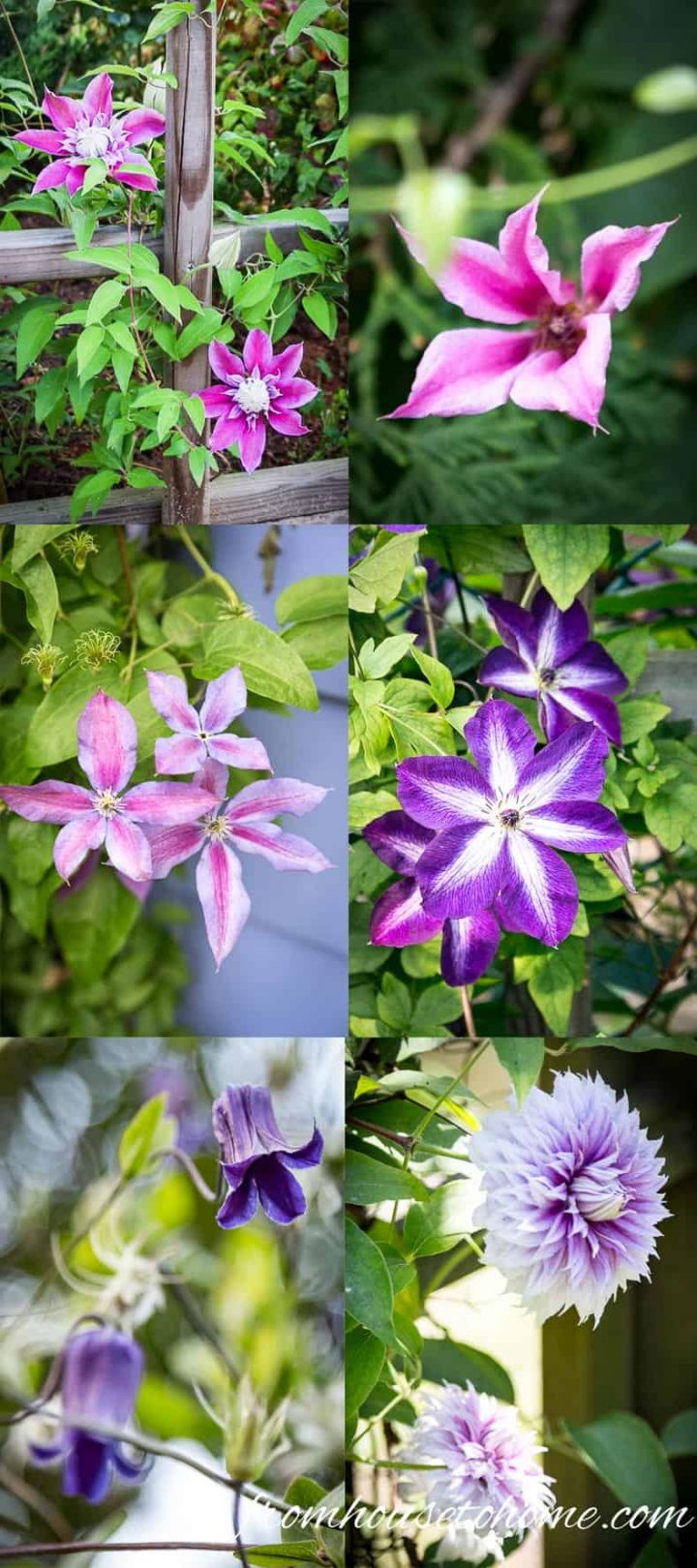
However, I think I'm justified. All you have to do is look at those beautiful blooms to know why I have so many of them.
But that's not the only reason.
Clematis is a very versatile and easy to grow perennial vine.
It comes in many colors, sizes and bloom times.
There are varieties with large flowers, small flowers, single or double petals, bell-shaped or tubular blooms.
Some varieties will only grow to be 2 – 3 feet tall, while others can cover the side of a garage.
And in almost all cases, Clematis vines are not invasive.
So you can grow them through other bushes without worrying about killing the plants (I do have experience with a couple of exceptions which I will tell you about later).
It has so many redeeming qualities that I think Clematis should be a part of everyone's garden.
So that's the “why” to grow these beautiful plants…keep reading to find out where and how to plant and grow Clematis.
What You'll Learn
If you know what you're looking for, you can skip straight to the section by clicking the link below.
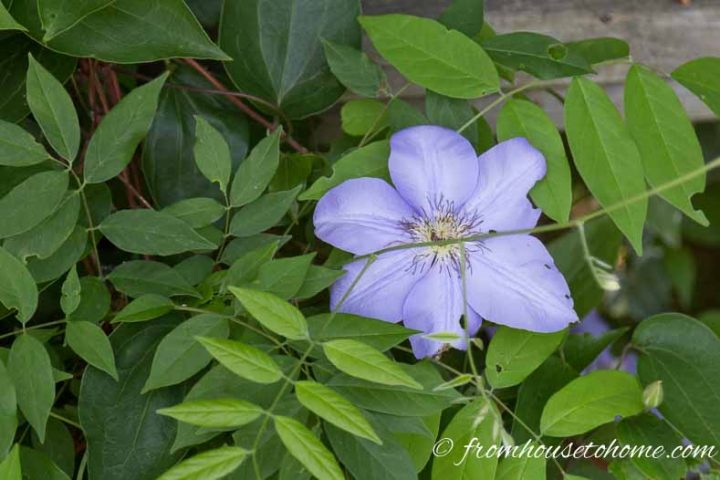
Where To Plant Clematis
Zones: 4 – 9
Light: Part shade to sun
Although most guides say that Clematis is a full-sun perennial requiring at least 6 hours a day of sunshine, where I live in South Carolina, I find that it grows best in part shade.
It really doesn't like the heat of our summer afternoons.
In fact, some of my plants bloom in the spring, die back completely in the summer and then grow and bloom again in the fall when the temperatures cool down. (I can't really complain about that since I get 2 bloom times every year!)
But (as with a lot of plants), the further North you are, the more sun it will need to produce the most blooms.
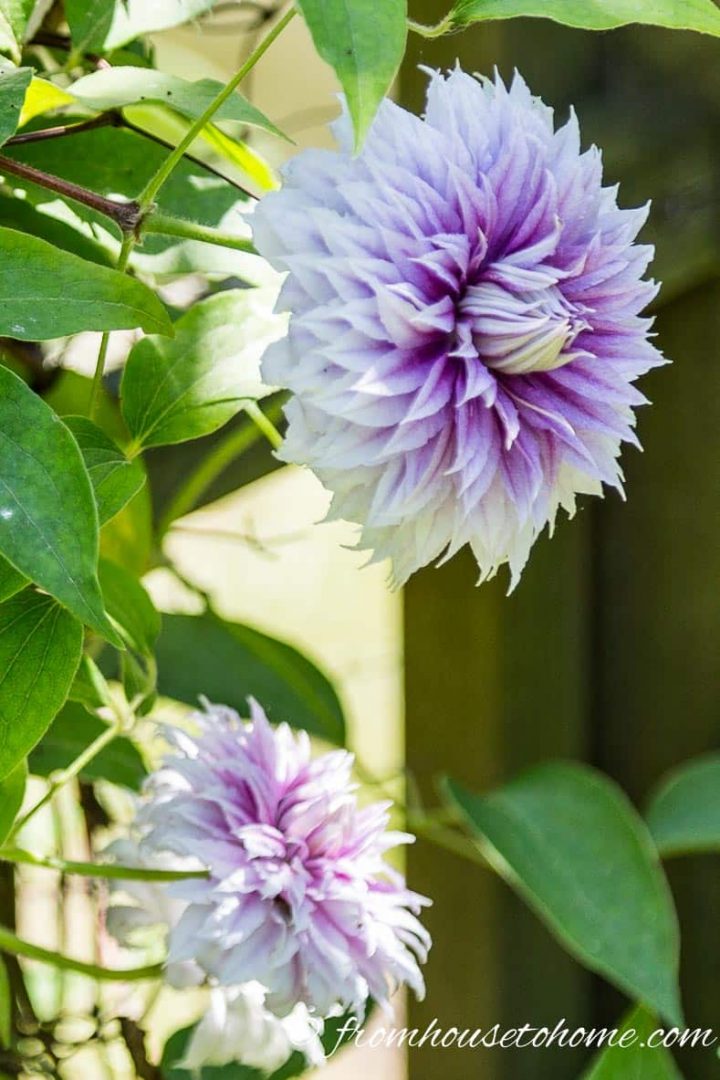
There's one other thing to keep in mind when choosing where to plant your Clematis.
Clematis like cool roots.
So you may want to pick a spot where the roots are shaded by other plants or structures, but the flowers are in the sun.
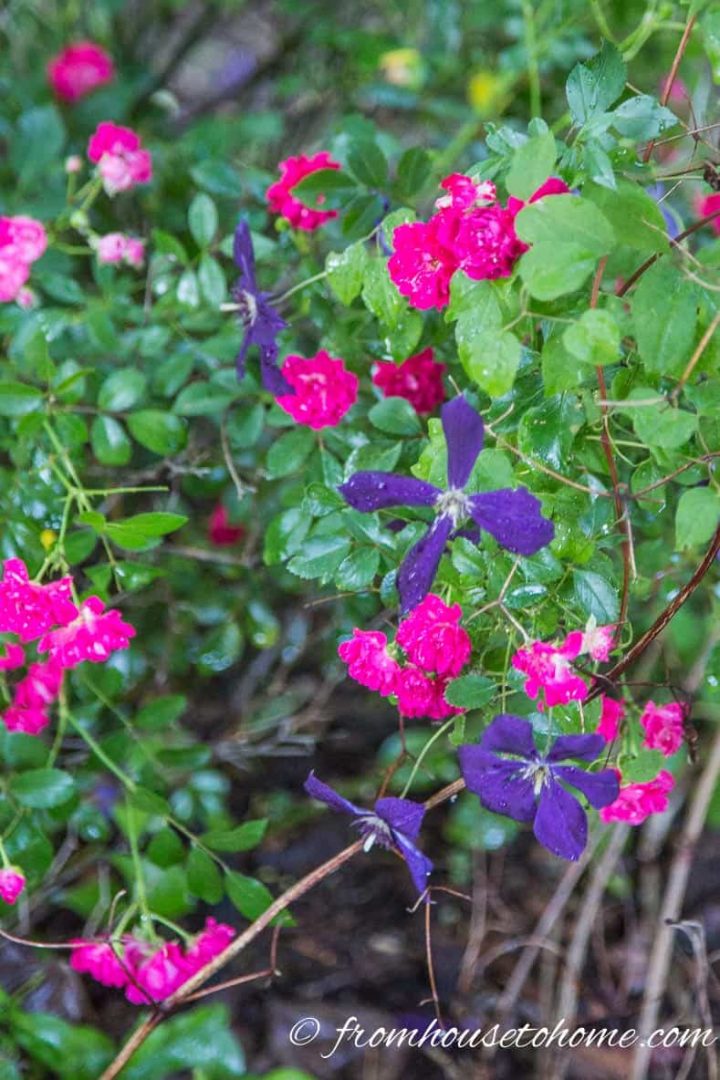
Supports
Since Clematis is a vine, it is usually grown on some kind of support.
Unlike some other vines, it is generally not an aggressive plant.
Which means it can be grown up through bushes or on top of other plants without causing them harm.
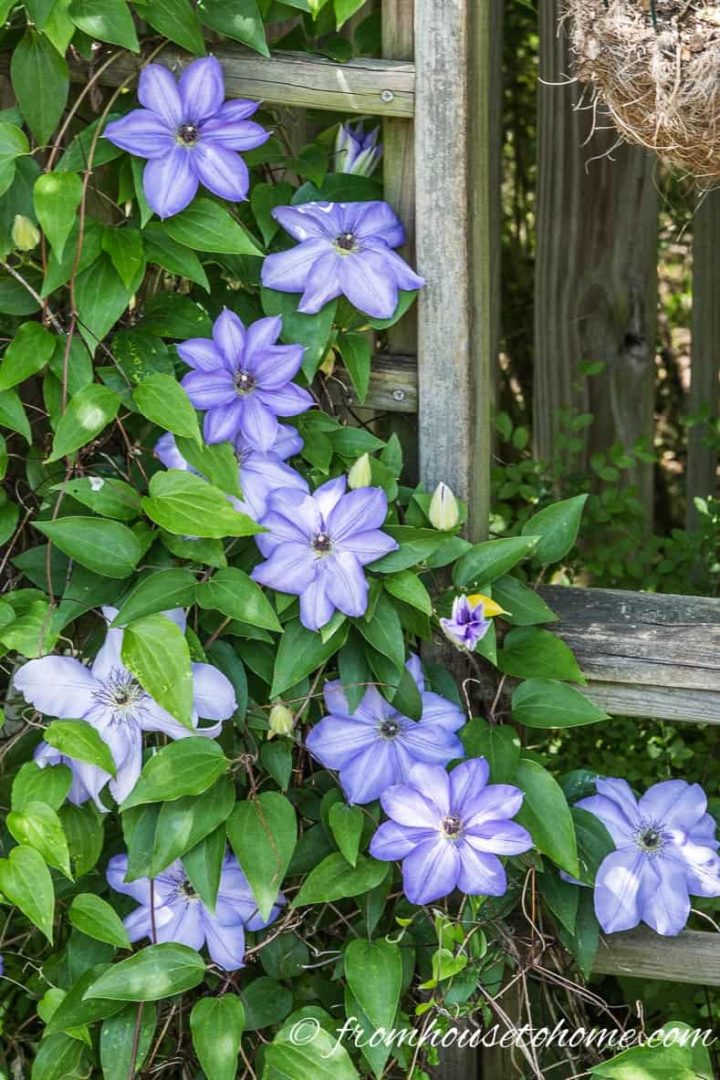
Of course, they look beautiful growing on trellises, arbors, and fences, too.
Since Clematis climb by twining their leaves around supports, and the stems aren't very long, they have difficulty sticking to wood structures.
To make it easy for them to climb, stretch some fishing wire or string across the growing surface which gives their leaf tendrils something thin to grab on to.
Although most gardeners don't grow it this way, Clematis can also work well as a ground cover (in which case you don't need any supports at all).
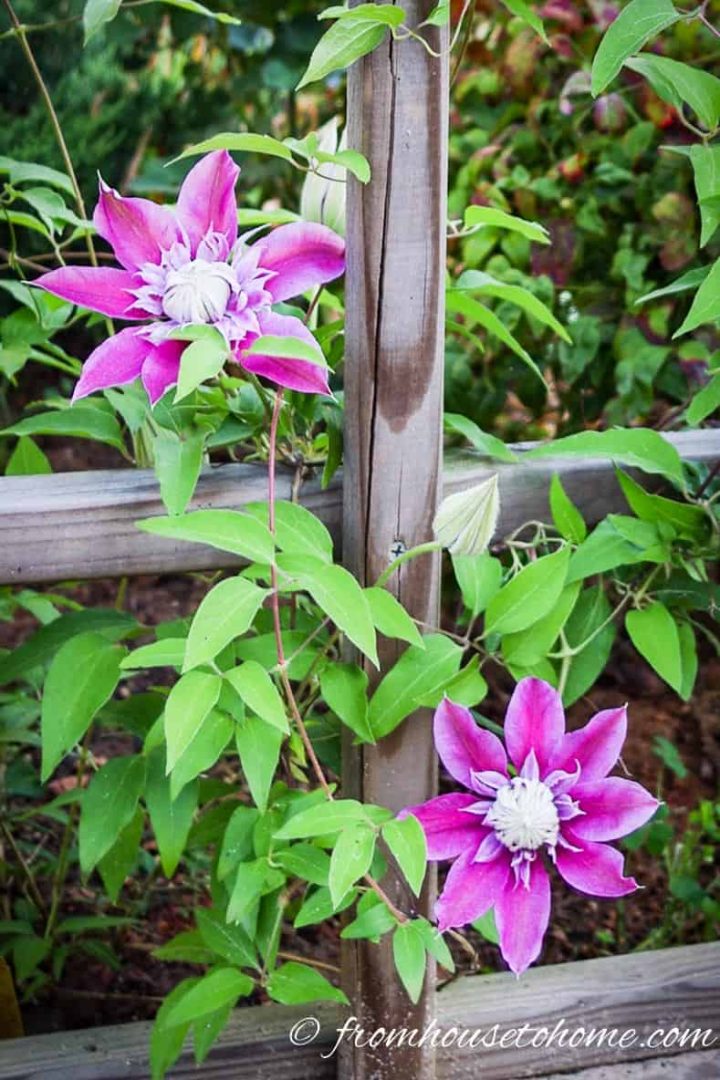
How To Plant Clematis
Once you have figured out where you are going to put your Clematis and what type of support you're going to use, the next step is planting it.
Dig a hole that is about twice as wide and deep as the size of the pot.
Mix some compost and good top soil in with the soil that you dug out of the hole.
While not absolutely necessary, adding a scoop of bone meal to the mix will help the roots to get established.
Fill the hole a little less than half way up with your soil mixture.
Plant your new Clematis so that a couple of inches of the stem is buried in the ground.
This will also help the plant establish strong roots.
Tilt the stem at about a 45 degree angle toward whatever support you are using. This will make it easier to get it to grow where you want it.
Then fill the rest of the hole up with your soil mixture and water well.
Cover the soil around the base of the plant with a thick layer of mulch (making sure that it isn't touching the stem).
If your new plant has a lot of growth on the top, prune it down to about 18″ tall. This will allow the roots to get established without having to support so many leaves and flowers which promotes a healthier plant.
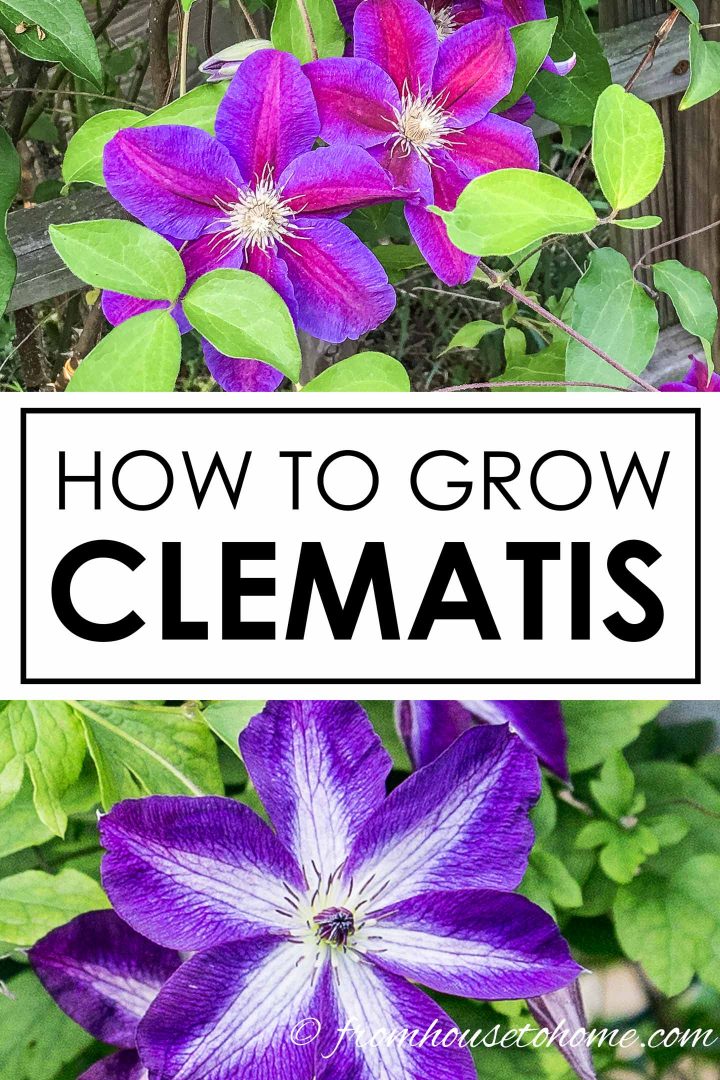
Growing Requirements
Clematis can take a couple of years to really become established, but once they do, they pretty much take care of themselves if you follow these guidelines.
Soil Conditions
One of the most important parts of Clematis care is to make sure you have well-drained but moist soil to grow the plants in.
Their roots can rot if they are too wet, and the leaves will fall off if it is too dry.
Clematis also prefer neutral to alkaline soil.
If you live in an area that has acidic soil (like I do in South Carolina), sprinkle some lime around the plants in the spring to help neutralize it.
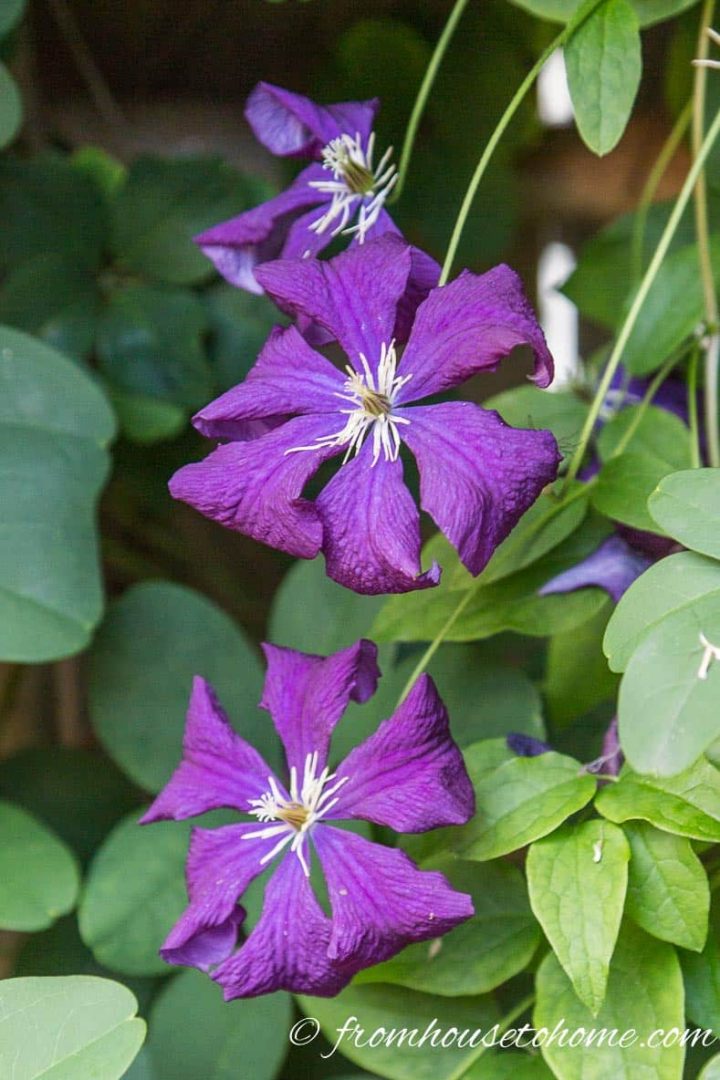
Watering
Watering regularly is a necessity for good-looking Clematis plants and flowers, especially during the heat of the summer.
As I mentioned above, not having enough water will cause the leaves to dry up and fall off leaving a very unhappy looking plant.
Installing your own drip watering system will make sure that they get the consistent watering they require.

Mulch
Mulch is the easiest way to prevent the roots of your Clematis from overheating.
And it also helps to keep the soil moisture from evaporating (which helps with that water requirement).
Every spring, I cover the base of all of my plants with a 3″ to 4″ thick layer of mulch making sure that it doesn't touch the stems (which can cause them to rot).
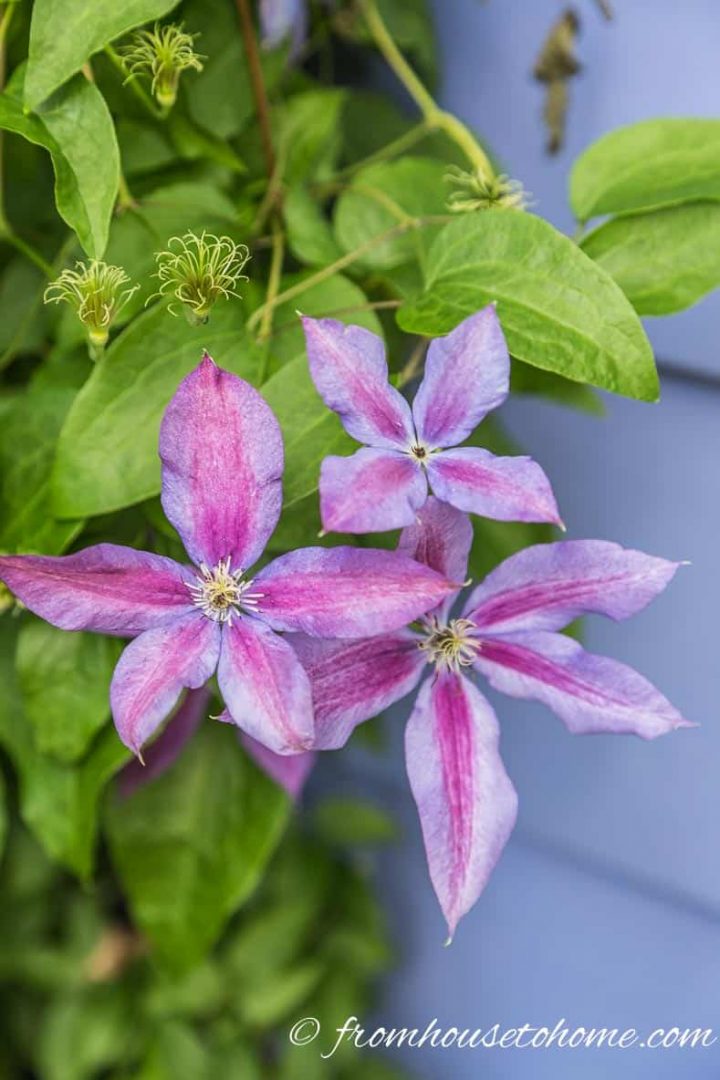
Fertilizing
With all of those big blooms, Clematis needs a lot of nutrients from the soil.
Fertilizing in the spring and the fall will help to keep them healthy and blooming.
I like to use organic fertilizer.
In the spring, I sprinkle alfalfa pellets (which you can find HERE*) around the base of the plant and water them until they get mushy.
Then in the fall, I put down a layer of compost around the plant which also adds to the organic matter in the soil.
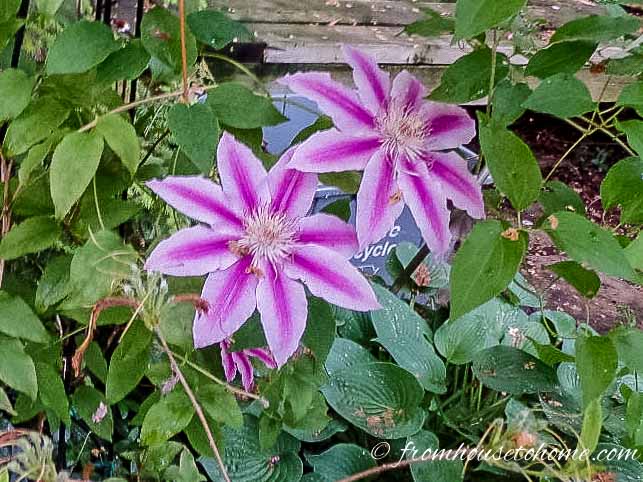
If you prefer to use chemical fertilizer, use one with less Nitrogen and more Phosphorus (eg. a 10-30-20 mixture) in the spring to promote blooms. In the fall, add an evenly balanced fertilizer (eg. 10-10-10 or 20-20-20).
Next up is learning how to prune your Clematis. It's really not as complicated as it seems!
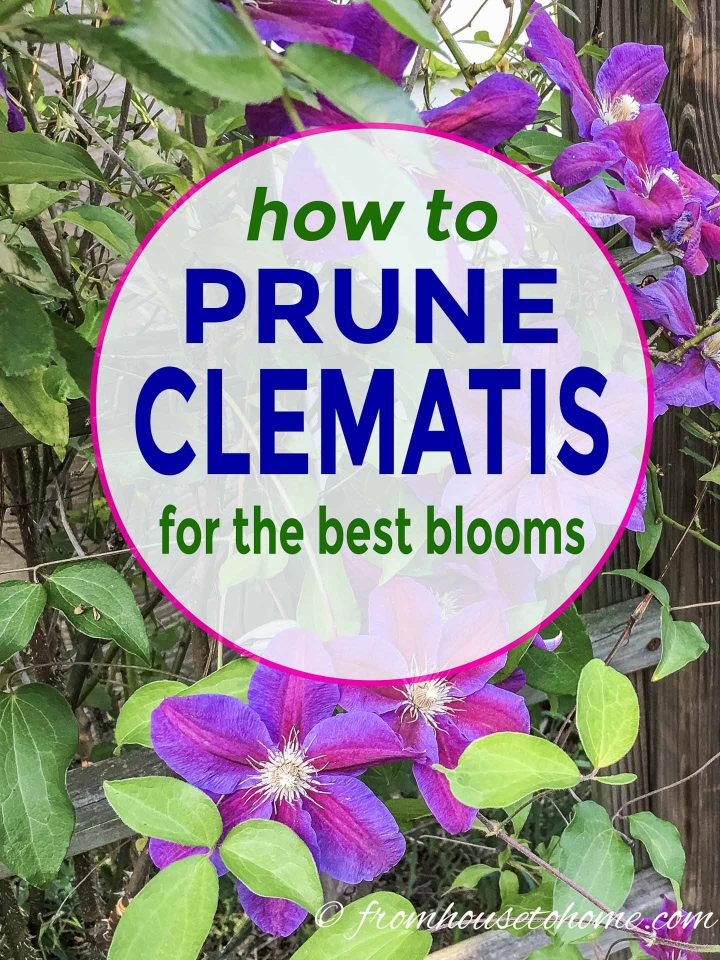
Pruning
Pruning seems like the most complicated part of Clematis care since different types should be pruned at different times.
The trick is to find out what type of Clematis you have so that you know when and how to prune it.
Clematis plants are generally divided into 3 groups, not very creatively named – group 1, group 2 and group 3.
The group that your variety falls in determines its pruning procedures.
[blockquote align=”center”]
Tip: If you're not sure which group your Clematis belongs to, try looking it up on Fine Gardening's website. Otherwise, use the descriptions below to figure out which one it's in.
[/blockquote]
Group 1
Group 1 Clematis have the following characteristics:
- flower in early spring
- has bell-shaped or small saucer-shaped flowers
- blooms on last year's shoots
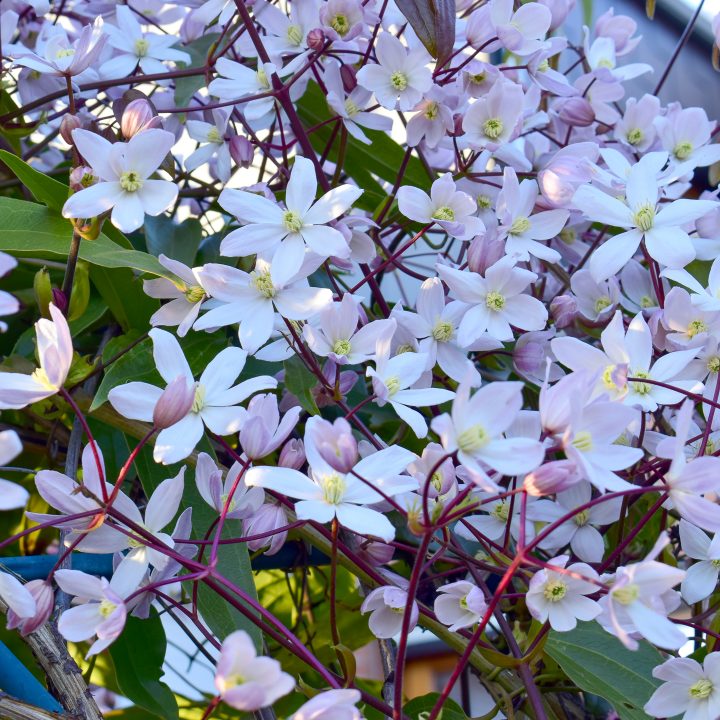
Group 1 should be pruned after they have bloomed to remove dead or damaged stems, and shorten the stems (if necessary), but do not need extensive annual pruning.
Group 2
Group 2 Clematis have the following characteristics:
- flowers in late spring and summer
- has large-sized flowers
- blooms on both last year's growth and this years new shoots
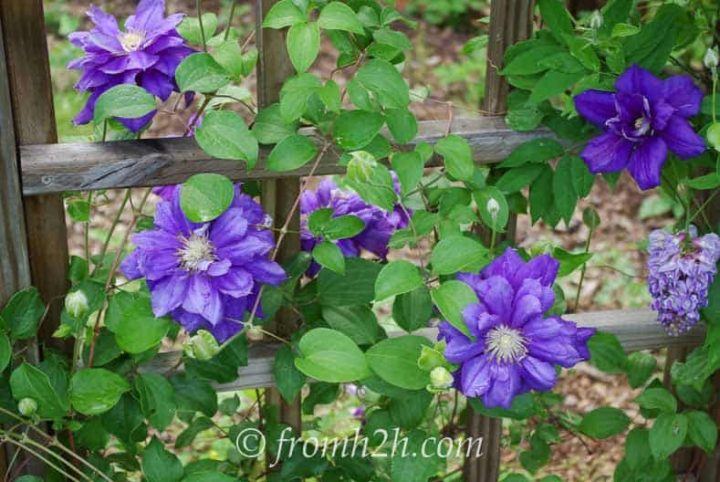
Pruning for group 2 should be done in early spring to trim stems just above strong buds (and to remove any dead or damaged stems).
Do not cut all the way back or you will reduce the number of flowers that you will get later.
Group 3
Group 3 Clematis have the following characteristics:
- flowers in summer or fall
- has large-sized flowers
- blooms on this year's growth

To prune group 3, cut the vines back to within 8 inches of the ground in early spring before new growth starts.
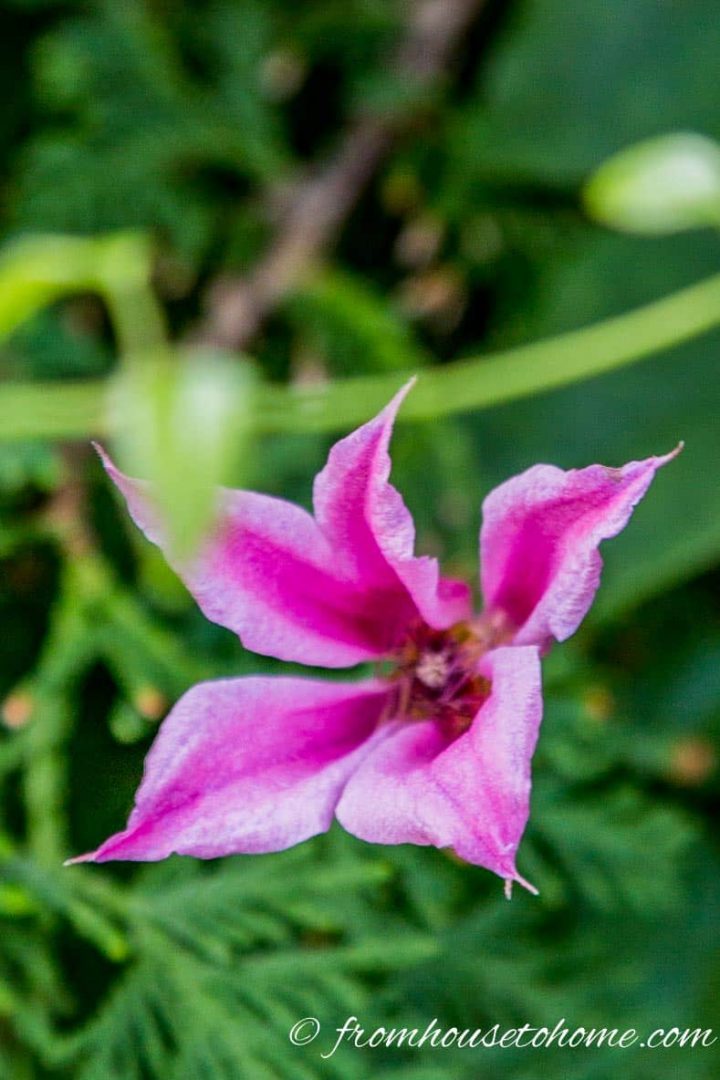
Other Varieties
With the popularity of Clematis vines, new varieties are being introduced all the time.
And they don't all fall into one of the traditional pruning groups.
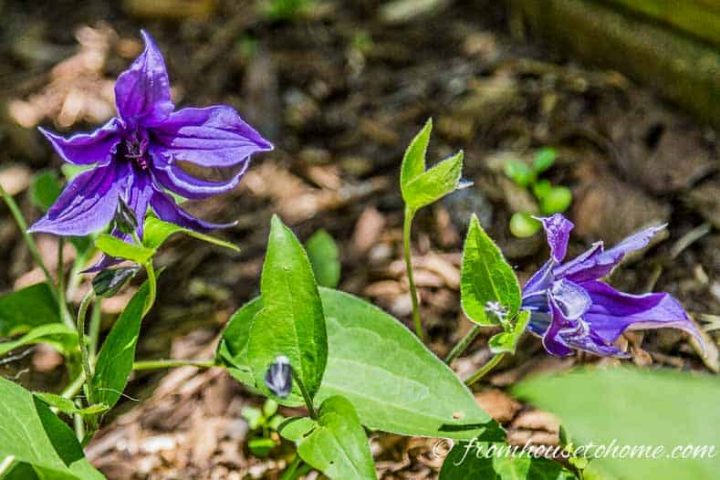
“Indigo Saphire” only grows to 3 feet tall and requires no pruning at all.
Since it doesn't get very tall, this is one of the varieties that I like to use as a ground cover.
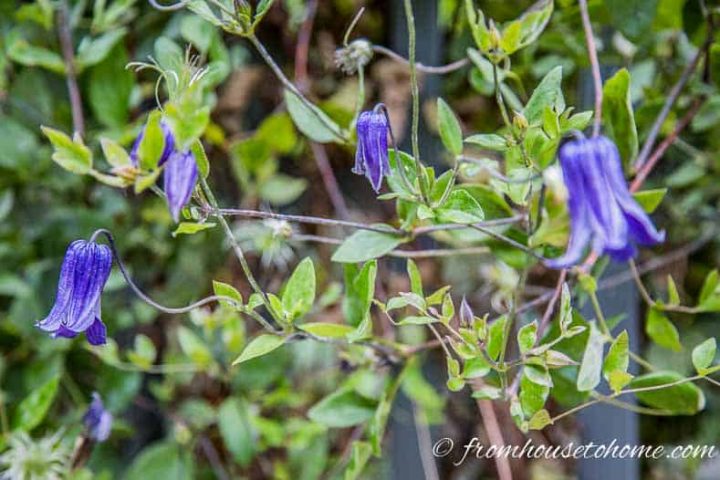
“Rooguchi” is a late spring bloomer that is not a true climber and should be cut all the way down to the ground in the early spring.
You can find out more about it in my “Best of” list below.
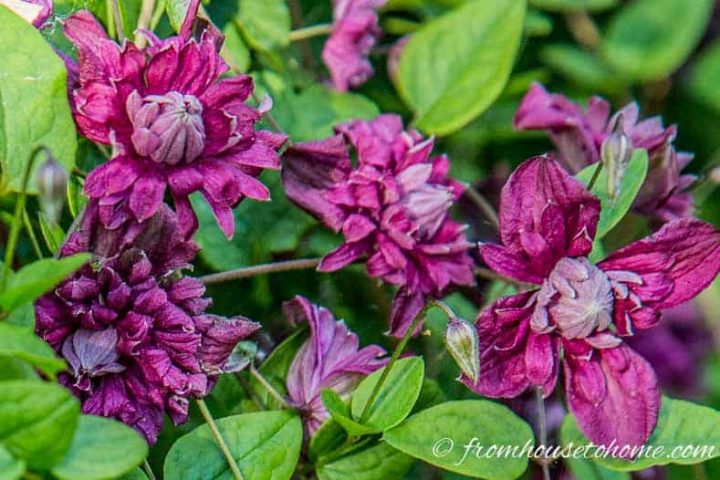
Clematis “Purpurea Plena Elegans” blooms on both old and new wood and benefits from pruning 1/3 of the branches each year so that the entire plant has been pruned every three years.
If after reading all the descriptions, you still aren't sure when to prune your plant, it is usually safe to do so immediately after it has finished blooming.
Having said all of that, there have been many times that I have neglected to prune my Clematis vines at all and they have still bloomed. So they're actually pretty forgiving.
They also seem to die all the way down to the ground occasionally but usually come back (just watch for the new shoots so you don't accidentally break them off).

The Best Clematis Varieties
Having grown a lot of different varieties of Clematis, I've come up with a few of my favorites, and a couple you might want to stay away from.
Toughest Clematis – ‘Venosa Violacea'
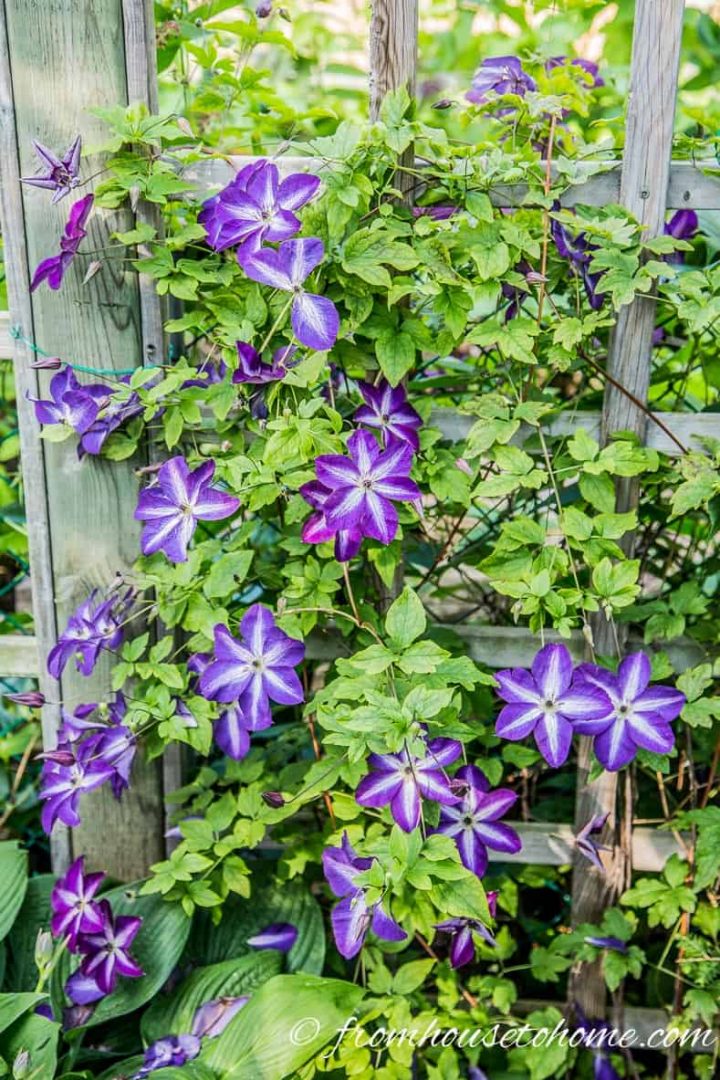
Clematis ‘Venosa Violacae' is a Victorian era French heirloom variety that has been around since 1893. And there's a reason why it is still popular today!
It blooms from spring until fall, doesn't seem to be phased by the heat, and even handles getting a little dry better than most Clematis.
Biggest Show – Clematis ‘Josephine'
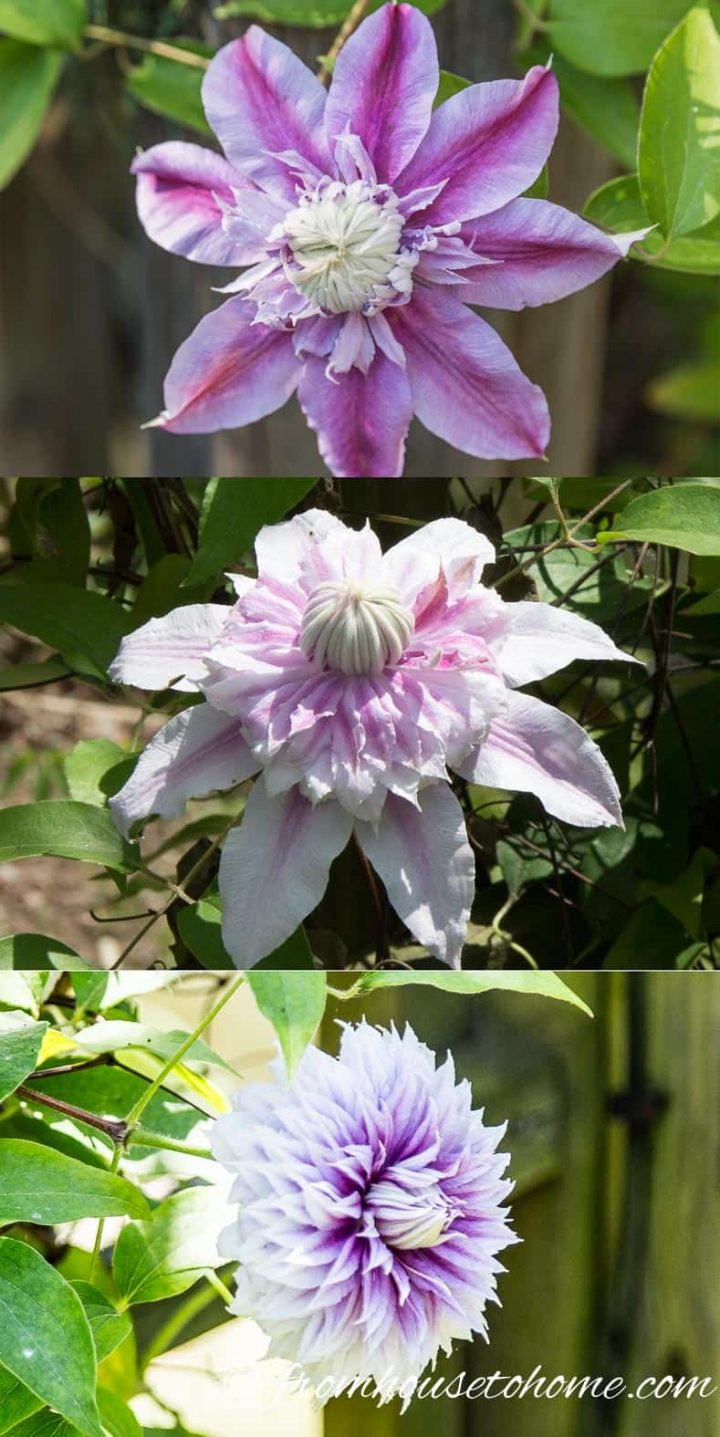
If you're looking for a Clematis that has big beautiful, multi-petal blooms, Josephine may be your girl!
She starts out like the picture above with dark pink single petals around the outside of a fluffy light pink center.
As the flower matures, the outside petals fall off and leave a flower that is a big fluff ball.
Not all of the flowers on the plant go through all of the stages (some go straight to the third stage), but they're still pretty.
Best Double Clematis – ‘Franziska Marie'
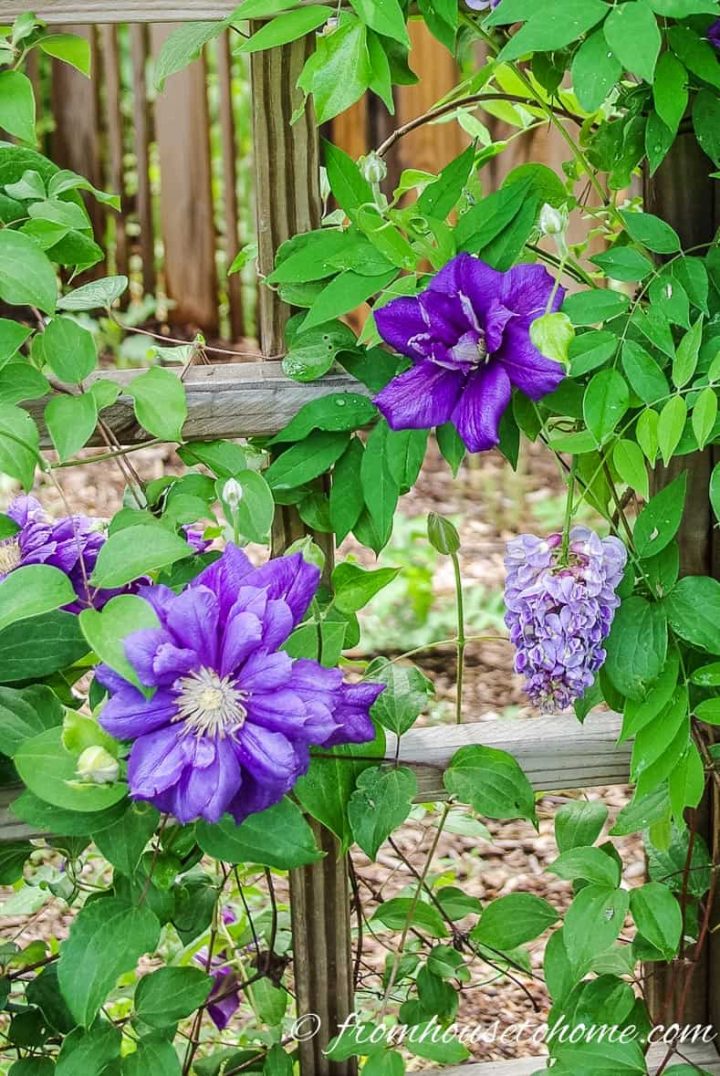
Clematis ‘Franziska Marie' has big double purple blooms that last all summer long.
The early blooms come out on old wood, and the later blooms grow on new wood, so even if it gets cut off by accident, you will still get some beautiful flowers!
Best Blue Clematis Variety – ‘Alice Fisk'
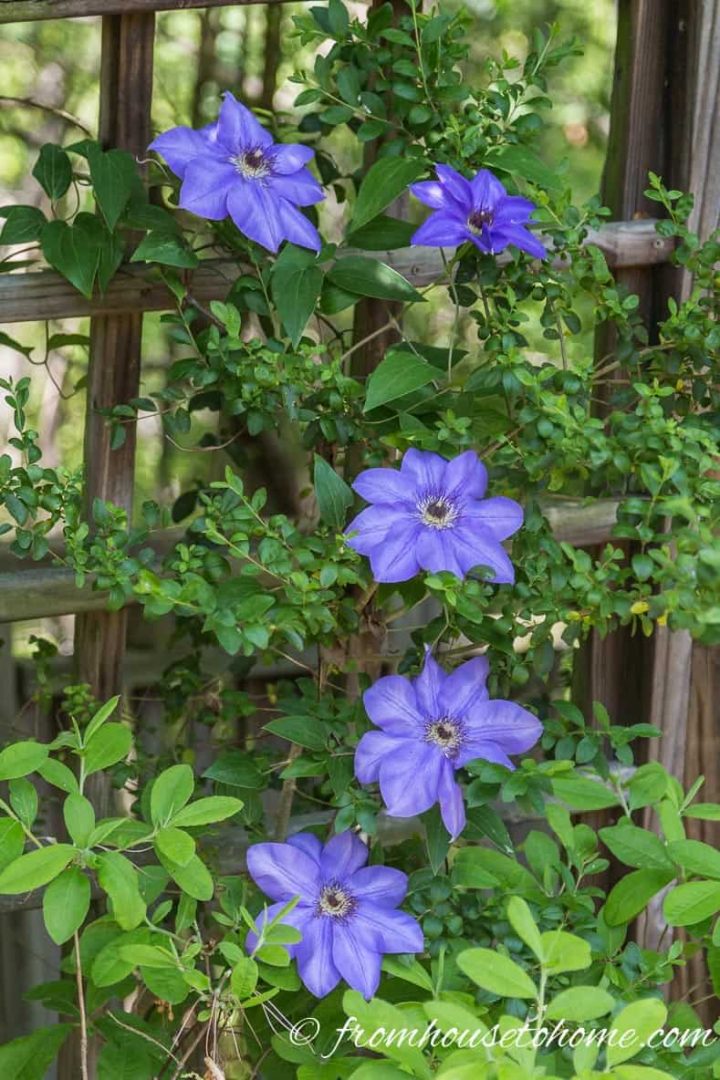
Clematis ‘Alice Fisk' has huge, eight-inch, periwinkle blue flowers that really stand out against the green foliage.
It grows through the arbor at the back of my yard and I can see the blooms clearly from the house.
Best Fuchsia Clematis – ‘Princess Diana'
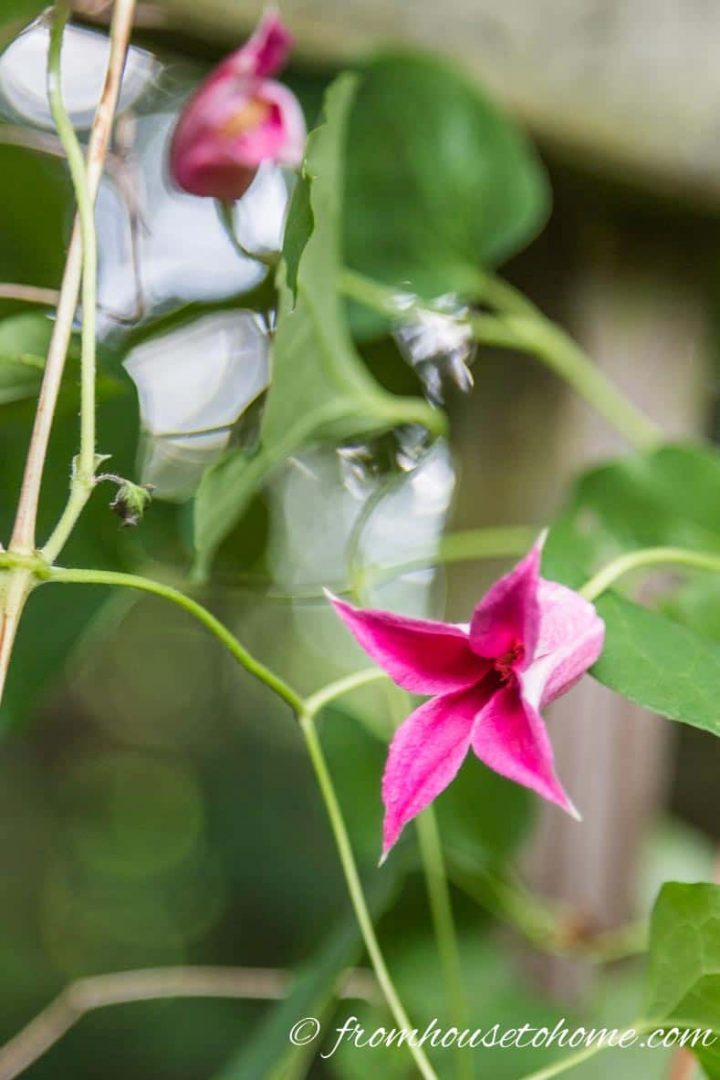
If you're looking for a bright pink Clematis, ‘Princess Diana' may be perfect.
Although the flowers aren't as big as some of the other Clematis varieties, it blooms profusely and the bright color makes up for its smaller size.
Best Striped Clematis – ‘Beth Currie'
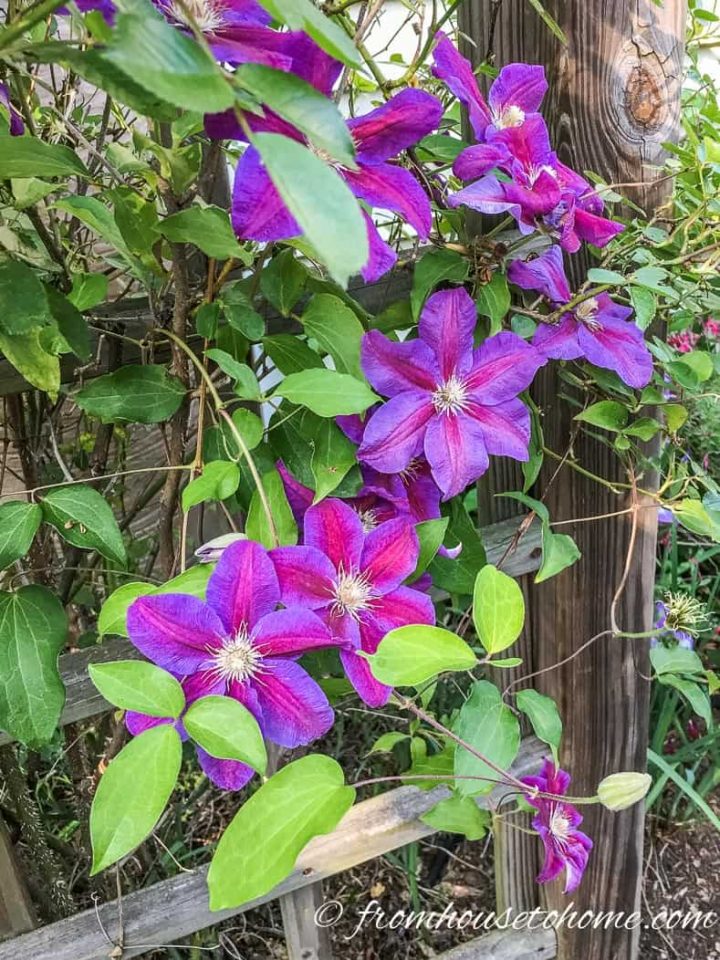
Clematis ‘Beth Currie' has purple and pink striped flowers that really stand out in the garden.
I like to plant mine with pink roses which complement the colors.
Most Aggressive – Clematis integrifolia ‘Rooguchi'
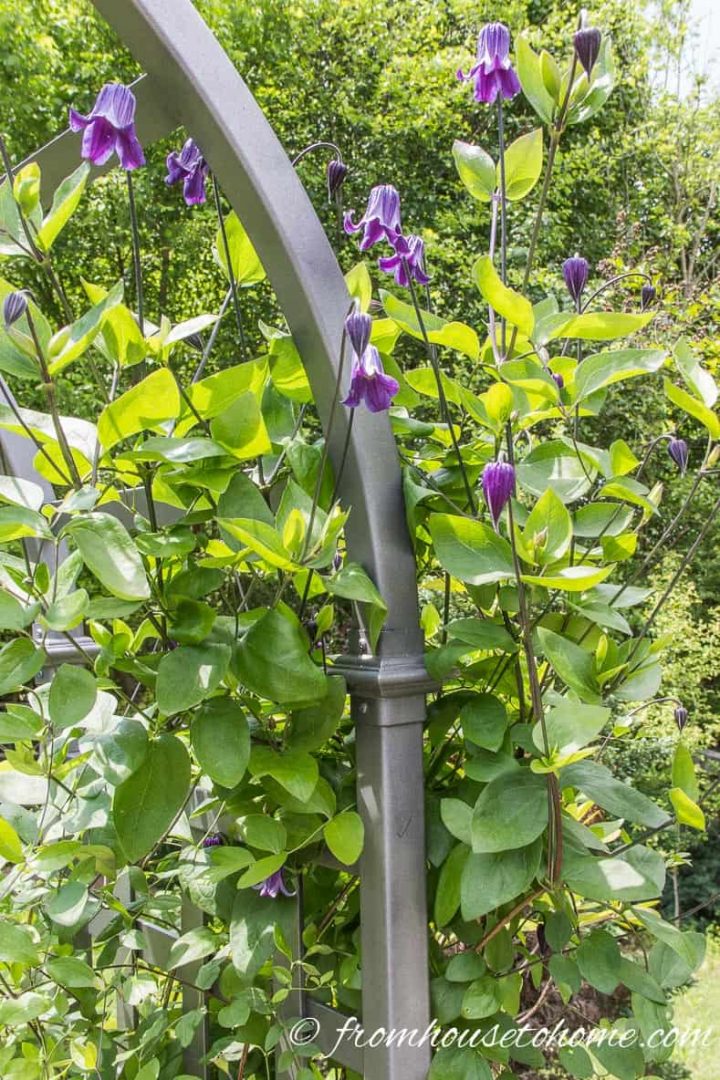
Clematis integrifolia ‘Rooguchi' has really pretty purple blue flowers and blooms profusely.
The big difference is that the plant is more like a bush than a vine. And it can easily choke out other smaller plants.
So while I still have this in my garden, I would recommend planting it in a location where it has lots of room to spread out.
Most Invasive – Autumn Clematis
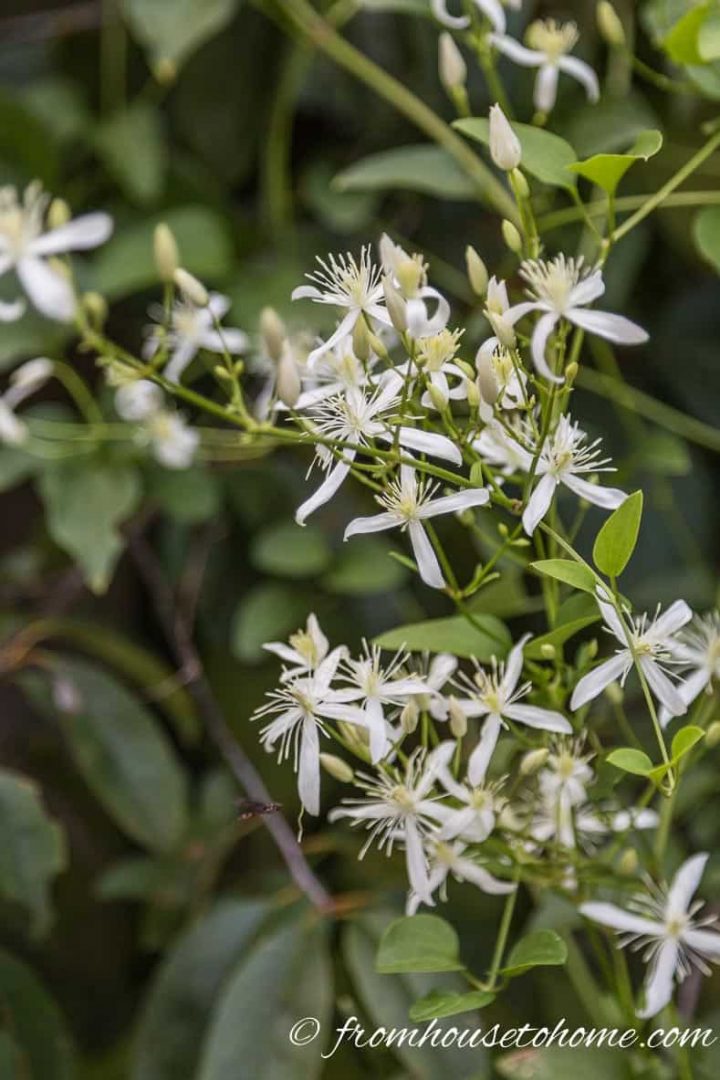
There's only one Clematis that I will not plant in my garden again, and that's the Autumn Clematis (Clematis ternifolia).
I had one growing beside an arbor in my yard and it never really did much (ie. I thought it had died) so I kind of forgot about it.
Until I saw it joining the Kudzu and Japanese Honeysuckle that are growing rampant over the trees in the ravine behind my house.
Then I looked it up and found it on the South Carolina invasive plants list…so I learned this lesson the hard way. Click HERE if you want to find out more about invasive plants.
Of course, depending on the climate and growing conditions in your area, it may or may not cause problems. Be sure to check with your local nurseries or other gardeners to find out before planting it.
Where To Find Other Varieties
If you want to find a Clematis that's right for your garden, or maybe are trying to identify one you already have, you can try out this web search tool.
You can enter in the color you are looking for, pruning group, and/or zone (among other characteristics) and it will give you a list of varieties that match along with their pictures.
Where to Buy Clematis
Here are a few of my favorite places to buy Clematis:
You can find more of my favorite places to buy plants online HERE.
Now I'm off to see if I can find variety #26 to add to my garden 🙂 And hopefully, you've found some inspiration for growing your own beautiful Clematis.
Other Perennials You Might Like
- 9 of the Best Flowering Vines For Shade
- Our Favorite Shade Plants
- How To Design A Stunning Shade Garden (With Pictures)
Do you have a comment or question about how to care for Clematis? Tell us in the section below.
Pin It So You Don't Forget It!
